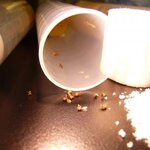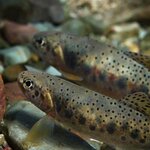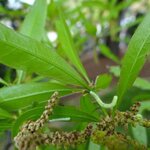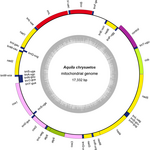Ecology & Zoology

The first genotyping of grey squirrels shows a direct link between their genetic diversity and their ability to invade new environments.
Grey squirrels are an invasive species introduced from North America. While they are common throughout most of the UK and Ireland, on mainland Europe they are currently only found in Italy, where they mostly exist in discrete, but slowly expanding, populations.
In a new study, scientists compared 12 DNA markers from grey squirrels (Sciurus carolinensis) in Piedmont in Northern Italy with the same markers from squirrel populations in Northern Ireland,…

In the rainforests of South America, scientists have discovered a new genus and three new species of
katydid
with the highest ultrasonic calling songs ever recorded in the animal kingdom.
Katydids (bushcrickets) are insects known for their acoustic communication, with the male producing sound by rubbing its wings together (stridulation) to attract distant females for mating. But these newly discovered insects turn ultrasonic calling all the way up to 11 on the dial - males reach a frequency of a startling 150 kHz. For comparison, the calling frequencies used by most katydids range between 5…

You catch more flies with honey than vinegar, it is said, but most people want to avoid catching flies at all. A study has found that a popular non-nutritive sweetener, erythritol, the main component of the sweetener Truvia®, is toxic to Drosophila melanogaster flies in a dose-dependent manner and so may be an effective and human-safe insecticide.
Erythritol is a naturally occurring sugar alcohol that is present in small amounts in many fruits. It has been tested in humans at high doses and found safe to consume; it has been designated as a generally recognized safe food additive…

A new paper in Nature Climate Change asserts that global warming is causing the hybridization of trout – interbreeding between native and non-native species – to increase in the interior western United States.
Specifically, they cite rapid increases in stream temperature and decreases in spring flow over the past several decades contributed to the spread of hybridization between native westslope cutthroat trout and the introduced rainbow trout – the world's most widely introduced invasive fish – across the Flathead River system in Montana and British Columbia, Canada. It's been…

Lighter-colored butterflies and dragonflies do better in warmer areas of Europe, a finding that could have implicated for global warming; darker insects could face a competitive disadvantage, finds a study recently published in Nature Communications.
Light-colored insects dominate the warmer south of Europe and darker insects dominate the cooler north. For dragonflies, the insect assemblage in Europe has on average gotten lighter during the last decades, which the authors attribute to climate change.
Insects, like lizards and snakes absorb energy from the sun to become mobile. The darker…

Research from North Carolina State University finds that a lack of plant diversity is a key contributor to the widespread defoliation caused by cankerworms in cities, and highlights the role that increasing diversity can play in limiting future damage.
Fall cankerworms (Alsophila pometaria) are caterpillars that are native to the eastern United States and hatch in early spring. The cankerworms defoliate trees and other plants, eating new leaves as they emerge – which is both unsightly and can ultimately kill the plants.
"We see cankerworms doing more damage to trees in cities than in the wild…

For several decades, there has been speculation about the formation of the enigmatic, vegetation-free circles frequently found in certain African grassland regions.
Now researchers have tested different prevailing hypotheses as to their respective plausibility. For the first time they have carried out a detailed analysis of the spatial distribution of these fairy circles – and discovered a remarkably regular and spatially comprehensive homogenous distribution pattern.
This may best be explained by way of reference to local resource-competition for water among plants and vegetation, the team…

When most people think of modern birds they don't often picture dinosaurs - but that is the case. Dinosaurs rule the sky as they once ruled land and there are even modern raptors - eagles.
At one time, eagles were endangered due to a shrinking habitat and, to a lesser extent, poaching. Today, wind turbines are a major threat. Unlike with hunting or land development law breaking, no wind turbine company has gotten anything more than a token fine for killing any eagle. Yet along with over 1200 other raptors, an estimated 70 golden eagles (Aquila chrysaetos) are killed annually at even a…

Carbon monoxide is known as the "silent killer" because it is imperceptible and lethal. Most homes carry detectors.
We think of it as artificial, due to car exhaust and such, but it is produced naturally in humans and animals, and some medical researchers have even evaluated the gas as a treatment for diabetes, heart attacks, sepsis, and other illnesses. Researchers at Scripps Institution of Oceanography at UC San Diego have studied carbon monoxide's natural characteristics and limitations by studying the gas in one of the world's best divers: the elephant seal.
In human bodies, CO is…

Seabirds, marine mammals, seabed animals and other fish actually love human fishermen - because they throw back unwanted fish and that means free food with less work.
New rules have been put in place by the European Union's Common Fisheries Policy (CFP) bans throwing unwanted fish caught at sea back into the sea – it forces vessels to haul fish to land anyway, which is a waste of time and money. The new CFP took effect on 1 January 2014 and will phase out the discarding of fish entirely by 2019.
The goal is less waste. It's not a new issue. UK Parliamentary debates in the…